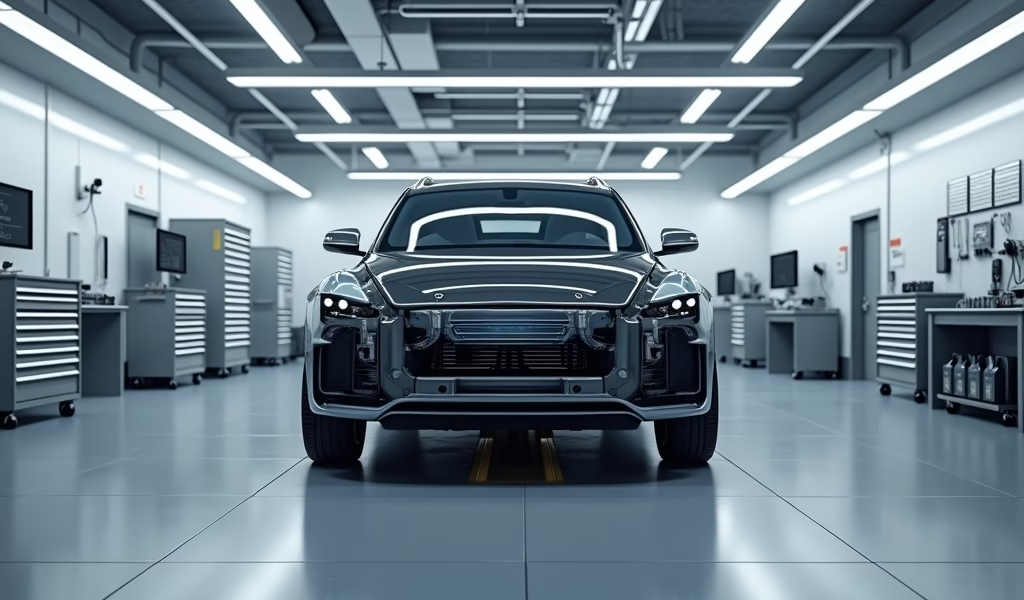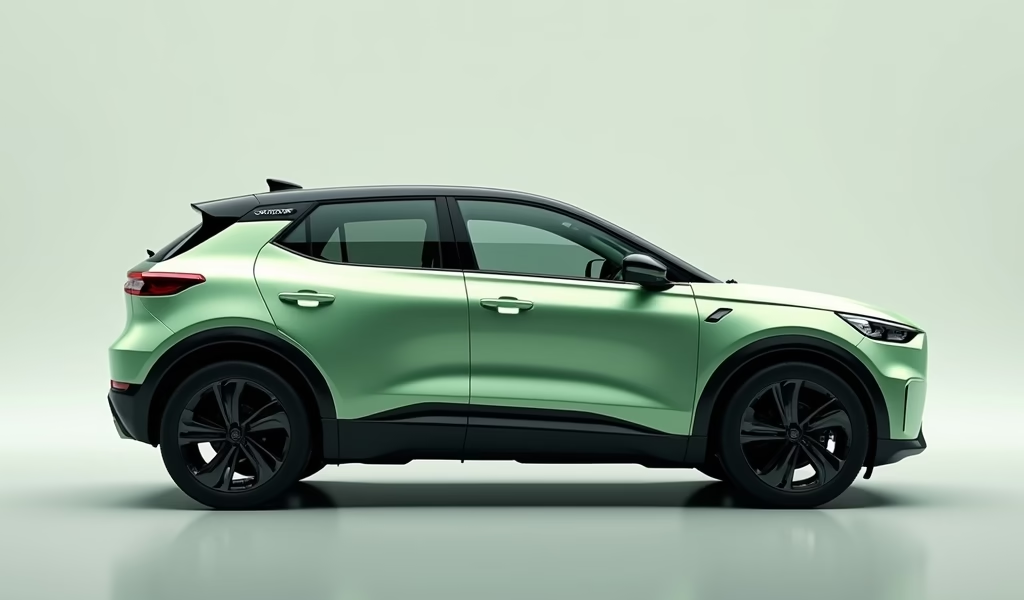Overview
This article explores five key cyclist recognition technologies that can drastically reduce accidents between vehicles and bicyclists: advanced camera systems, radar-based detection, AI-powered software, automated emergency braking, and cyclist alert systems. The safety innovations work by identifying cyclists through various sensors and either alerting drivers or automatically taking preventive actions, with the technology becoming increasingly standard in newer vehicles while aftermarket options make upgrades possible for older cars.
Table of Contents
- Understanding Cyclist Recognition Systems
- Why Cyclist Detection Technology Matters
- Fix #1: Advanced Camera Systems
- Fix #2: Radar-Based Detection Solutions
- Fix #3: AI-Powered Recognition Software
- Fix #4: Automated Emergency Braking for Cyclists
- Fix #5: Cyclist Alert Systems
- Implementation Guide
- The Future of Cyclist Safety Technology
- Conclusion
- Frequently Asked Questions
Understanding Cyclist Recognition Systems
As a mechanic who’s spent 20 years under the hood, I’ve seen vehicle technology evolve from basic backup cameras to sophisticated cyclist recognition systems that could save countless lives. These systems aren’t just fancy add-ons; they’re game-changers for road safety.
A cyclist recognition system uses sensors, cameras, and software to detect bicycle riders who might otherwise remain invisible to drivers. Think of it as having an extra set of eyes constantly scanning the road, especially those tricky blind spots where cyclists often disappear from view.
The technology works by analyzing shapes, movements, and patterns to distinguish cyclists from other road users. When the system identifies a potential risk, it alerts the driver or even takes automatic action to prevent collisions.
Why Cyclist Detection Technology Matters
Every year in the US, nearly 850 cyclists lose their lives in traffic accidents according to the National Highway Traffic Safety Administration. Many of these tragedies happen because drivers simply didn’t see the cyclist until it was too late.
The most dangerous scenarios typically occur at intersections, during right turns (the infamous “right hook”), and when drivers open doors without checking for approaching cyclists. Standard mirrors leave notorious blind spots where a cyclist can be completely invisible to drivers yet directly in the path of danger.
Human perception has its limits. A momentary distraction, fatigue, or simply focusing attention elsewhere can mean missing a cyclist entirely. This is where modern technology steps in, providing constant vigilance when human attention inevitably wavers.

Fix #1: Advanced Camera Systems
If your vehicle lacks proper cyclist visibility, installing advanced camera systems should top your upgrade list. These aren’t your basic backup cameras – we’re talking comprehensive coverage that eliminates dangerous blind spots.
What’s involved:
- 360-degree camera systems with multiple strategically placed cameras
- Front, rear, and side-view coverage for complete situational awareness
- Integration with your dashboard display for real-time visual feedback
- High-resolution imaging that works in various lighting conditions
The best systems stitch together images to create a bird’s-eye view of your vehicle, making it virtually impossible for cyclists to disappear from your awareness. Vehicles equipped with these systems show up to a 60% reduction in backing crashes and significantly improved detection of cyclists during turns.
Installation typically runs between $500-$1,500 for quality aftermarket systems, though newer vehicles increasingly include these as standard equipment. It’s not just about safety—these systems make everyday driving in cyclist-heavy urban environments significantly less stressful.
Fix #2: Radar-Based Detection Solutions
Cameras are fantastic, but they rely on clear visibility. What happens in fog, heavy rain, or darkness? That’s where radar-based detection systems become invaluable for cyclist safety.
Unlike cameras, radar systems emit radio waves that bounce off objects and return data about distance, speed, and direction of travel. They function effectively in conditions that would render cameras nearly useless, providing that crucial extra layer of protection when visibility is compromised.
Key advantages:
- All-weather performance regardless of lighting or precipitation
- Ability to detect cyclists through visual obstructions
- Precise distance and speed calculations for accurate risk assessment
- Integration with existing vehicle safety features like blind-spot monitoring
Manufacturers like Volvo and Mercedes have pioneered these technologies, incorporating sophisticated radar arrays that can distinguish between various road users and calculate collision risk in milliseconds. Aftermarket radar systems start around $700, with installation adding another $200-400 depending on your vehicle’s complexity.
For drivers who frequently navigate in challenging weather conditions or at night, radar detection provides peace of mind that visual systems alone cannot match.
Fix #3: AI-Powered Recognition Software
The hardware gathers the data, but it’s the software that turns that information into actionable intelligence. Modern cyclist recognition systems employ sophisticated artificial intelligence that distinguishes cyclists from other objects with remarkable accuracy.
These AI algorithms have been trained on millions of real-world examples, allowing them to recognize not just the presence of a cyclist, but predict their likely movements based on speed, direction, and even subtle body language cues. It’s like having an experienced cycling coach riding with you, anticipating what riders might do next.
What makes AI recognition special:
- Continuous learning and improvement through software updates
- Ability to differentiate between cyclists, pedestrians, and other road users
- Predictive capabilities that anticipate cyclist movements
- Reduced false positives compared to basic detection systems
The most exciting aspect is that these systems improve over time. Through regular software updates, recognition accuracy increases without requiring new hardware installation. This means your car literally gets better at protecting cyclists with each update.
Companies like Mobileye offer aftermarket systems that bring AI-powered cyclist recognition to older vehicles. While not inexpensive (typically $800-1,200 installed), they represent some of the most sophisticated safety technology available to everyday drivers.
Fix #4: Automated Emergency Braking for Cyclists

When it comes to preventing cyclist collisions, reaction time makes all the difference. Automated Emergency Braking (AEB) systems specifically calibrated for cyclists can react in milliseconds – far faster than even the most alert human driver.
Cyclist-specific AEB systems are specially designed to identify the unique profile and movement patterns of bicycles. These advanced systems can detect cyclists moving parallel to traffic and anticipate crossing scenarios that traditional AEB might miss.
The reaction time advantage:
- Human drivers: typically 1.5 seconds to perceive and react to a hazard
- AEB systems: can begin braking within 0.1 seconds of detection
- At 30 mph, this difference translates to over 60 feet of stopping distance
The European New Car Assessment Programme now includes cyclist AEB performance in its safety ratings, which has driven major improvements across the industry. Testing has shown that vehicles with advanced cyclist AEB can reduce cyclist collisions by up to 40% in common accident scenarios.
While formerly limited to luxury vehicles, these systems have rapidly expanded into mainstream models. By 2024, most new vehicles sold in the US will feature some form of cyclist detection and emergency braking as standard equipment.
Retrofitting true AEB is challenging for older vehicles, but advanced warning systems that provide alerts (discussed in Fix #5) offer a practical alternative for those without factory-installed automatic braking.
Fix #5: Cyclist Alert Systems
Not every vehicle can be equipped with full automated emergency braking, but virtually any car can benefit from cyclist alert systems. These affordable upgrades provide crucial warnings that give drivers time to react manually to potential hazards.
Modern alert systems employ a multi-sensory approach: visual warnings appear on mirrors or displays, auditory alerts sound through the vehicle’s speakers, and haptic feedback (like vibrating steering wheels or seats) provides tactile warnings that cut through driver distraction.
Effective alert types:
- Visual indicators on side mirrors or dashboard displays
- Distinct audio warnings that differentiate cyclist alerts from other notifications
- Haptic feedback through steering wheel or seat vibrations
- Smartphone integration for additional warning capabilities
The latest systems go beyond the vehicle itself, integrating with broader connected ecosystems. Apps like Bike Shield enable communication between cyclists’ smartphones and equipped vehicles, providing advance warning even before visual contact is established.
Aftermarket alert systems range from basic blind spot monitors ($100-300) to sophisticated connected systems ($400-700). Even the simplest systems can dramatically improve cyclist awareness, making them one of the most cost-effective safety upgrades available.
Implementation Guide
Bringing cyclist recognition technology to your vehicle requires thoughtful planning based on your specific situation. Here’s how to approach the upgrade process:
For newer vehicles (2018 and later):
- Check if cyclist recognition features are already installed but deactivated
- Inquire about manufacturer software updates that might enhance existing capabilities
- Consider dealer-installed options that integrate seamlessly with factory systems
For older vehicles:
- Start with camera systems as they provide the most immediate benefit
- Add radar detection if you frequently drive in poor visibility conditions
- Consider standalone alert systems that don’t require complex integration
From a financial perspective, these safety upgrades represent both an immediate expense and potential long-term savings. Many insurance companies now offer discounts for vehicles equipped with advanced safety features, typically ranging from 5-15% of premium costs.
When prioritizing upgrades, consider your typical driving environment. Urban drivers who frequently encounter cyclists might benefit most from comprehensive camera systems and cyclist alert systems, while those who drive in varying weather conditions might prioritize radar-based detection.
The Future of Cyclist Safety Technology
The road ahead for cyclist recognition technology looks promising, with innovations that will make today’s systems seem primitive by comparison. As a mechanic who’s witnessed decades of automotive evolution, I can tell you we’re just scratching the surface.
Vehicle-to-bicycle (V2B) communication systems currently in development will enable direct digital conversations between bikes and cars. This technology would eliminate reliance on visual or radar detection entirely—cyclists would become visible to vehicles via wireless signals long before they come into view.
Regulatory trends suggest many of these technologies will become mandatory rather than optional. The European Union has already mandated cyclist detection systems for new vehicles, and similar regulations are being considered in the United States.
By 2025, cyclist recognition capabilities will likely be standard on nearly all new vehicles, with increasingly sophisticated systems appearing first in premium models before spreading throughout the market. The technology adoption curve suggests that within a decade, vehicles without these systems will become the exception rather than the norm.
Conclusion
The five cyclist recognition system upgrades we’ve explored—advanced cameras, radar detection, AI-powered software, automated emergency braking, and alert systems—represent powerful tools for making our roads safer for everyone who shares them.
Like any good mechanical system, these technologies work best when they function together rather than in isolation. A comprehensive approach combining multiple detection methods creates a safety net with redundancy and robustness that no single system can provide alone.
Yet technology alone isn’t enough. Driver awareness, responsible behavior, and mutual respect between all road users remain fundamental. The most sophisticated cyclist detection system in the world can’t replace an attentive driver committed to safety.
Whether you’re upgrading an existing vehicle or shopping for a new one with advanced safety features, investing in cyclist recognition technology isn’t just about avoiding accidents—it’s about embracing a future where cars and bikes can share the road with confidence and security.
After all, every cyclist is someone’s family member, friend, or colleague. The technology to protect them exists today. The only question is: will you make it part of your vehicle’s safety system?
Frequently Asked Questions
How much does it cost to add cyclist recognition systems to an older vehicle?
Basic aftermarket systems start around $500, while comprehensive solutions with cameras, radar, and alerts can run $1,500-2,500 installed. Insurance discounts may offset some costs over time.
Can cyclist recognition systems work in bad weather?
Camera-only systems have limitations in fog, heavy rain, or darkness. Radar-based systems provide superior all-weather performance by detecting cyclists regardless of visibility conditions.
Are these systems difficult to install?
Basic alert systems can be DIY projects for those with automotive electrical experience. More sophisticated systems with multiple cameras, radar, and integration typically require professional installation.
How effective are cyclist recognition systems at preventing accidents?
Studies show properly equipped vehicles can reduce cyclist collisions by 40-60% in common accident scenarios. The most effective systems combine multiple detection technologies with automated responses.
Will these systems become mandatory in the future?
The European Union has already mandated cyclist detection for new vehicles, and similar regulations are being considered in the United States. Most industry experts expect widespread regulatory requirements within 3-5 years.

